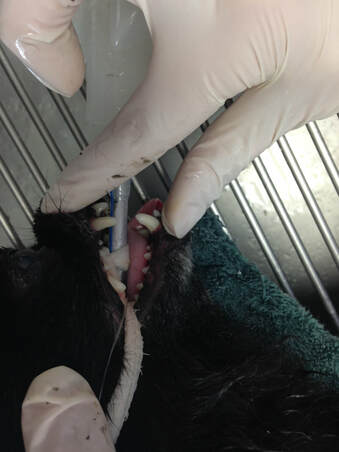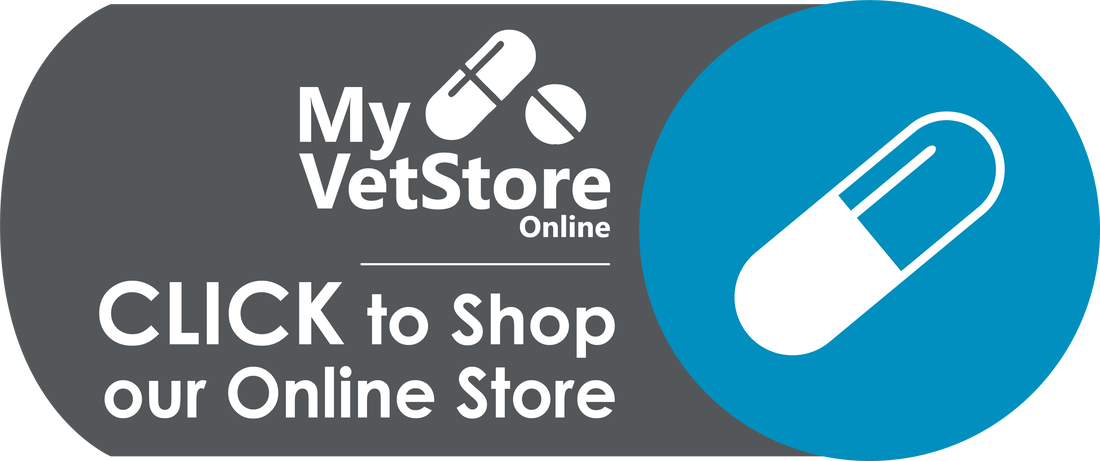 Before dental cleaning. Before dental cleaning. With the passing of the first two weeks of Dental Month, we realize we haven't been totally transparent with you about dental cleanings. No, we aren't saying they aren't beneficial (read about the benefits here), we've just never shared the down and dirty about dental cleanings. And believe us, they are DIRTY! So, here comes the "tooth"; are you ready? The preparation for a dental cleaning can begin days before the actual procedure depending on the age of your pet because we use pre-anesthetic sedatives and inhaled anesthetics. If your pet is over the age of seven, we require blood work to give us an insight into how their body is functioning and to look for any warnings your pet may have trouble processing the anesthesia. It is very rare, but we have determined a dental cleaning to be too risky when lab results were weighed against the benefits. This is also why we recommend doing blood work a few days before surgery, to avoid canceling the surgery the same day and to spare your pet the frustration of missing a meal.  After dental cleaning. After dental cleaning. Oh, right, your pet has to be fasted after midnight before the surgery. This is to prevent aspiration before the tracheal tube is placed and during its removal. After you drop off your pet, they will be given the pre-anesthetic sedative if we aren't doing blood work the same morning (which is available if you aren't able to come in earlier or you decide you'd like to run the lab work during check-in). After they are sedated, we will place a catheter in a front leg for IV fluids (optional for pets under 7-years-old). The IV fluids help to prevent complications by keeping your pet hydrated and regulating their blood pressure while under anesthesia and during recovery. Once they are sedated, we will give an injectable anesthesia and place the tracheal tube. The tube allows us to use less anesthesia because it more effectively delivers the anesthesia/oxygen mix to your pet's lungs, where it enters their bloodstream and gives them one of the best naps they'll ever have. By using less anesthesia, your pet is able to recover more quickly and with less of the "hang-over". During a dental cleaning, the tracheal tube offers another benefit because it has an inflatable cuff to keep it in place. This inflatable cuff prevents water and other fluids from entering the lungs. After the tracheal tube is placed, we can finally get down to business. We use an ultrasonic scaler to clean tartar, plaque, and debris from each tooth. While the doctor is scaling, a technician is monitoring your pet's heart rate and breathing. The scaler uses both vibration and jets of water to remove the gunk without damaging the healthy teeth underneath. During the scaling, the doctor checks each tooth to make sure it is firmly rooted and healthy. If a tooth is loose or unhealthy, it will be removed at this time. Some teeth are decayed or infected at the root and may require a dental specialist to remove. After both sides are scaled and all needed extractions are done, we polish all the remaining teeth. Lastly we rinse their teeth and mouth with a fluoride rinse to get large bits of debris out. Now that those teeth are sparkling, we begin the process of waking them up. As they come out of the anesthesia, we monitor them closely. Once they are sufficiently awake, we deflate the cuff on the tracheal tube and remove it. Then they recover in a warm, cozy kennel under close observation. A dental cleaning requires lighter sedation than other surgeries, so pets usually wake up sooner and have fewer restrictions after the procedure. Phew, we have to say how good it feels to get all this out there. We are really glad we finally took the time to come clean about dental cleanings.
4 Comments
2/28/2020 03:10:24 pm
It's good to know that an animal's dental cleaning can take days to prepare for depending on their age. My beagle needs to have his dental check-up and he is about twelve years old. I'll talk to a local vet and see how many days in advance do I need to prepare him for his appointment.
Reply
4/3/2020 09:54:12 am
I appreciate how you said that by using less veterinary anesthesia means that you could have a pet that would recover more quickly from everything. Having a healthy pet means having a happy pet and that is really important. If your pet isn't happy then you could all be struggling and not just your pet.
Reply
11/16/2020 03:27:30 pm
I didn't know that pets need blood work done if they are over the age of seven. My mom's dog needs some dental work done because his tooth looks like it broke. He is pretty old so I'll let her know they'll probably do some extra work on him.
Reply
2/23/2021 02:47:49 pm
It's good to know that my dog can recover faster if less anesthesia is used. My dog is everything to me so I want him to be as healthy as possible. Hopefully, I can find a veterinarian that will use less anesthesia so I won't have to worry.
Reply
Your comment will be posted after it is approved.
Leave a Reply. |
Archives
April 2021
Categories |





